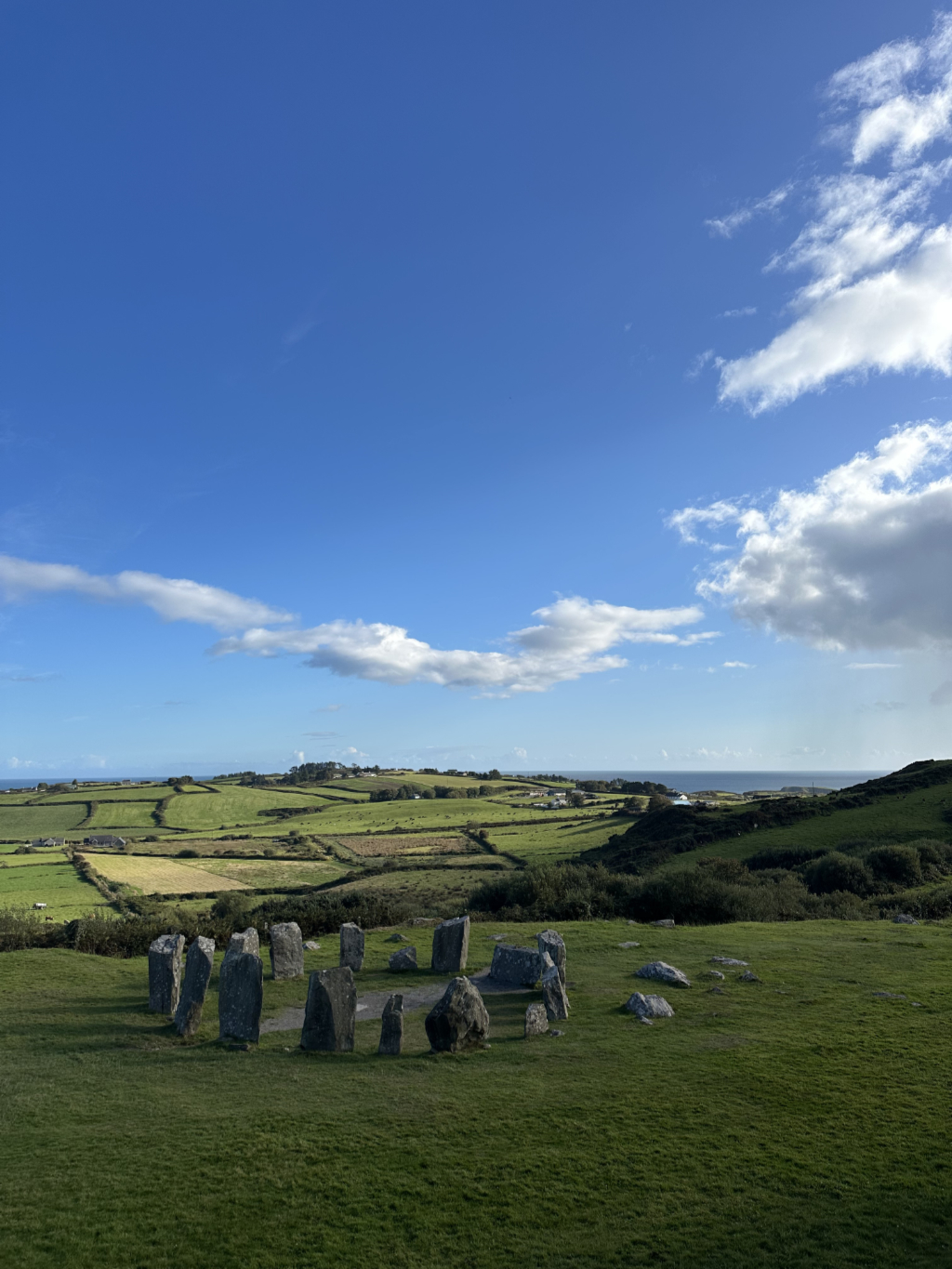Drombeg Stone Circle
It was three thousand years ago that this place came to be.
 The sacred standing stones of sandstone and slate stand stark against the open sky. Over the vastness of the lush horizon, a glimpse of the ocean can be seen. The placement of the stones coincides with the celestial alignment of the setting sun during the Winter Solstice — the darkest day of the year. As the sun dips from the sky and rests upon the hills, the stones seem to rise to meet it in a perfect frame.
The sacred standing stones of sandstone and slate stand stark against the open sky. Over the vastness of the lush horizon, a glimpse of the ocean can be seen. The placement of the stones coincides with the celestial alignment of the setting sun during the Winter Solstice — the darkest day of the year. As the sun dips from the sky and rests upon the hills, the stones seem to rise to meet it in a perfect frame.
It is said that Drombeg once served as a space for communal gatherings, though archaeologists continue to debate its exact purpose. Some believe it was used as an Iron Age cooking site, a sweat house, a bathing pool, or even a basin for dyeing clothes. One of the strangest discoveries here, however, was an urn unearthed at the very center of the circle, containing the cremated remains of an adolescent. Due to this and several other findings, early theories suggested sacrificial rituals took place here — though these ideas have since been dismissed. Drombeg is now understood as a place of renewal, burial, ceremony, and ritual — not of literal sacrifice.
Drombeg is often referred to as “The Druid’s Altar.” Although direct evidence of the druids’ presence is limited, it is quite possible that they once gathered here. The druids were a mysterious caste of spiritual leaders and advisors, possessing deep knowledge across diverse fields and holding prominent positions in ancient society. They were healers, adjudicators, lore-keepers, political advisors, and priests. Because their religious doctrine forbade them from recording knowledge in writing, no written accounts of their practices survive. This only adds to the richness and mysticism surrounding their legacy — the very reason we seek out places like Drombeg, to explore the unknown and imagine what once was.
Stepping through the standing stones, visions of the past may stir in your mind’s eye: ancient druids in a ceremonial circle; a trio of hunters returning with freshly caught venison; others preparing a fire beneath a great pot of stew; a woman teaching her child how to tend the dye baths; men and women laughing together as they leave the sweat house. These imagined scenes mirror those we might encounter today at a countryside festival.
Even now, during the Winter and Summer Solstices, many gather at Drombeg to continue the traditions passed down through millennia. Some come with wine, food, instruments, games, and boisterous laughter. The hills echo once again with a joyful cacophony of color, music, and celebration — just as they did centuries ago.
